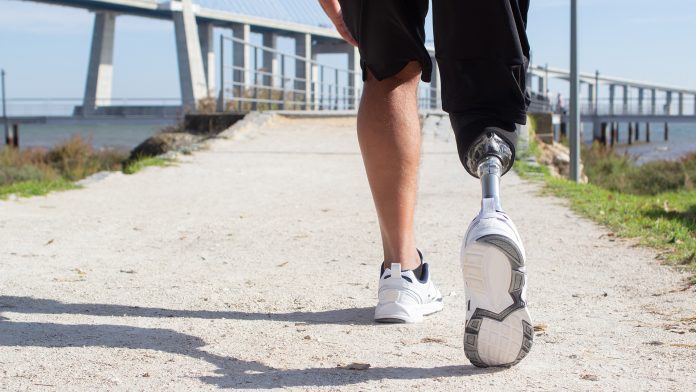
Strengthening hip muscles could be key to improving mobility in people with a below-knee amputation, according to research from the University of Birmingham.
Millions worldwide live with a below-knee amputation that significantly affects their mobility. Studies have shown that only 5% of people fitted with a prosthetic limb use it for more than half of their waking hours. Lower activity levels can lead to muscle wasting and atrophy in the remaining part of the limb.
A study from researchers at the University of Birmingham and Imperial College London, titled ‘The effect of muscle atrophy in people with unilateral transtibial amputation for three activities: Gait alone does not tell the whole story‘, has shown that the knee extensor muscles just above the knee, are at the highest risk of atrophy due to the natural inclination to protect the soft tissue around the amputation site.
Hip abductors are key to improving mobility
The researchers identified hip abductors around the hips, which could be strengthened to compensate for weaknesses in the knee extensor muscles. The team then studied amputees’ functional ability across three activities essential for independent living: walking, getting out of a chair, and climbing stairs.
“Even with a prosthesis, there will be reduced mobility in the amputated limb. People will also use their sound limbs more and try to protect the soft tissue at the amputation site. All these factors combine to reduce muscle volume in the amputated limb. In addition, putting additional load on the intact limb can lead to further problems like osteoarthritis,” said Dr Ziyun Ding of the University of Birmingham, who led the research.
“It’s inevitable that people with a below-knee amputation will try to protect those soft tissue areas, but the hip abductor muscle, a major muscle in the leg, is not part of the stump knee interface. By strengthening this muscle, the leg will work better without overloading the knee extensor muscle,” continued Dr Ding.
A group of eight military personnel who had below-knee amputation after being injured in combat agreed to participate in the study. The participants were at least 12 months post-operation and had been using their prosthesis for at least six months.
Creating care pathways after below-knee amputation
The researchers used high-resolution MRI measurements to accurately assess how muscle volume in the amputated limb had changed. The team also captured motion data from the three activities. Additionally, they used computational modelling to understand internal factors that could not be assessed using imaging techniques, such as muscle force and bone-on-bone contact.
The team was able to create a clear picture of the biomechanics involved in each essential activity. The researchers were able to identify a hip abductor muscle which was key to improving functional mobility by working to strengthen the muscle after a below-knee amputation. Targeted exercise activities and electrical stimulation techniques similar to those used in stroke patients were identified as possible treatment pathways.
Next, the researchers will increase the size of the study cohort and examine how factors such as age, type of amputation and cause might also affect muscle atrophy after below-knee amputation.









